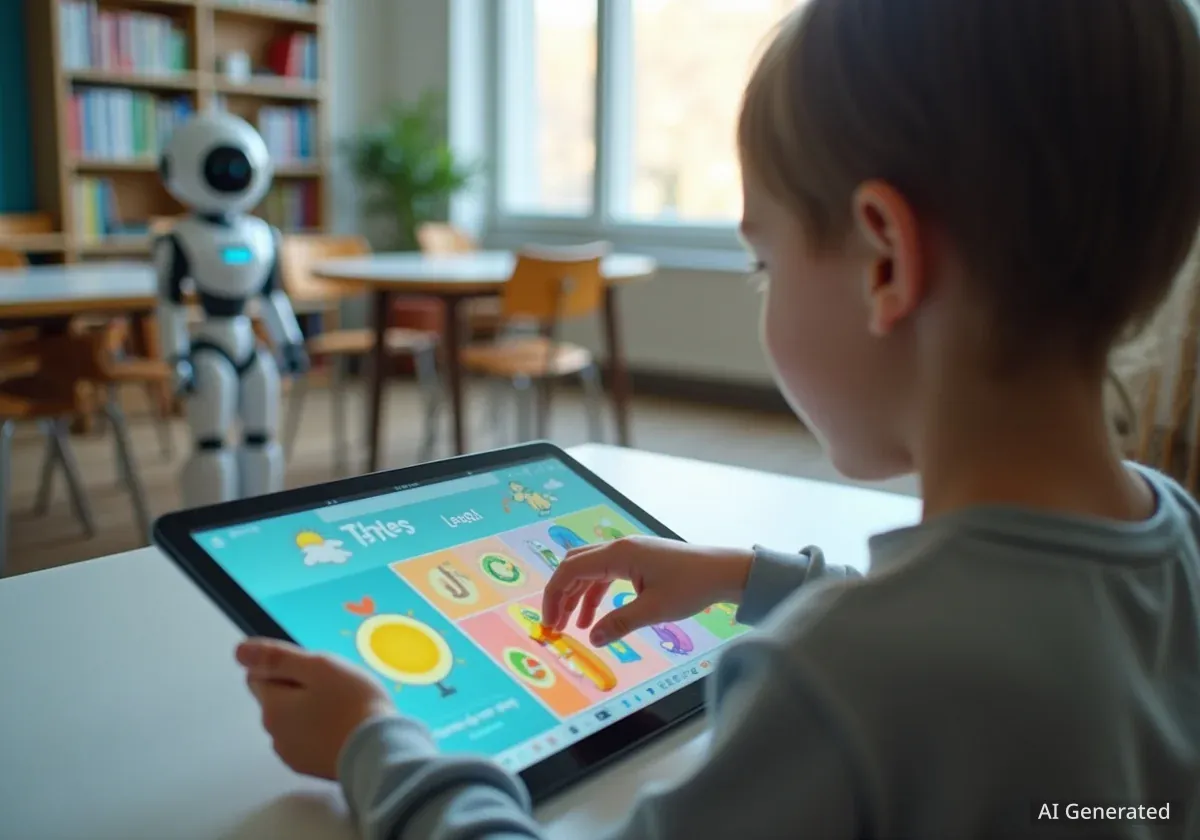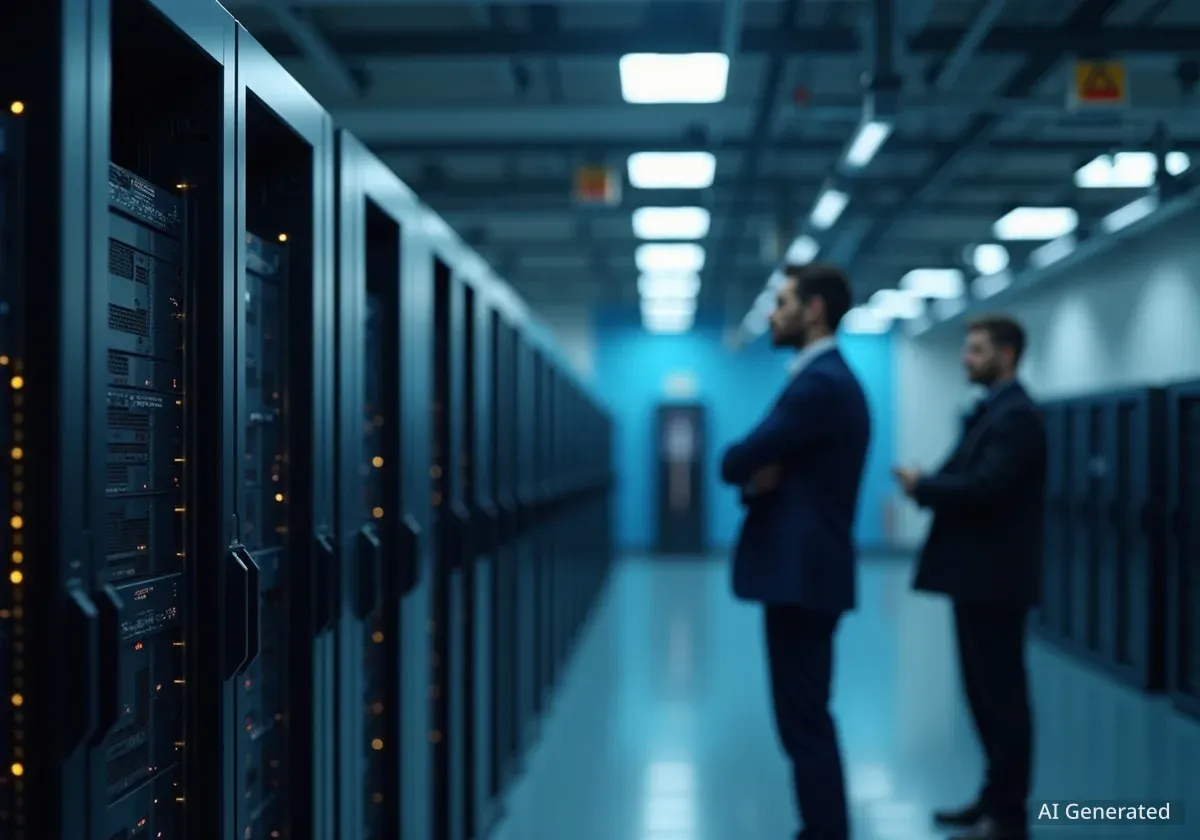In China, a nationwide initiative to integrate artificial intelligence into the lives of children is rapidly gaining momentum. Supported by government directives and fueled by a competitive education market, AI-powered tools, from robot companions to automated tutoring systems, are becoming common in homes and classrooms. While many parents embrace these technologies as cost-effective alternatives to human tutors, experts are raising concerns about the potential long-term effects on child development and social equity.
Key Takeaways
- The Chinese government is actively promoting the use of AI in education to personalize learning and address inequalities.
- Parents are adopting AI tools like robot tutors and learning tablets, often citing lower costs and the need for companionship for their children.
- Technology companies are capitalizing on this trend, creating a multibillion-dollar market for educational AI products.
- Academics and researchers warn that overreliance on untested AI could hinder social skills, critical thinking, and potentially widen the educational gap between urban and rural students.
AI Enters the Chinese Household
Across China, artificial intelligence is no longer confined to research labs; it is becoming an active participant in family life. Parents are increasingly turning to AI-powered devices to supplement their children's education and provide companionship. This trend is driven by a desire to give children a competitive edge and the high cost of traditional tutoring.
For example, Wu Ling, a university teacher in Jiangsu province, purchased an $1,170 robot dog named AlphaDog for her 12-year-old son. Developed by the robotics company Weilan and powered by DeepSeek's AI model, the device serves multiple functions. It helps her son practice English, discusses current events with him, and even dances to his music. "My son needs company, but we are a one-child family," Wu explained. She sees the robot as a way for her son to learn about the world.
AI in the Home
The AlphaDog robot, weighing around 18 pounds, is more than a tutor. It includes a built-in camera that allows parents to monitor their home remotely, blending educational functions with home security and companionship.
The trend extends to even younger children. Tong Mingbo, a 31-year-old mother in Hangzhou, uses ByteDance's AI app, Doubao, to interact with her 4-year-old son. The chatbot can narrate stories or engage the child in conversation, giving her a much-needed break. "When he was chatting with Doubao, I got to take a 20-minute nap," Tong said. However, she also expressed concern that her son became more impatient with her after interacting with the highly accommodating AI.
Government Mandates Fuel Widespread Adoption
The surge in educational AI is not solely a consumer-driven phenomenon. It is a key component of China's national strategy to become a global technology leader. In an August directive, the central government mandated the integration of AI throughout the education system. The stated goals are to facilitate personalized teaching, improve learning outcomes, and reduce educational disparities.
A Global Phenomenon
China's push for AI in education is part of a worldwide movement. In the United States, Alpha Schools use AI for core subjects. In India, OpenAI is training teachers to use AI for lesson planning. Meanwhile, U.S. toy giant Mattel is collaborating with OpenAI to develop AI-powered toys, signaling a broad international shift toward integrating AI into children's lives.
Provincial governments have followed with their own ambitious targets. Beijing has made AI education a mandatory part of its school curriculum. The province of Shandong aims to equip 200 schools with advanced AI technology and requires all teachers to become proficient in generative AI tools within five years. Similarly, Guangxi province is encouraging schools to experiment with AI-driven teachers, career coaches, and mental health counselors.
This top-down approach has created a massive, multibillion-dollar industry. Schools are adopting a wide range of AI products, including personalized exercise books and systems that can grade exams in minutes. Some teachers on social media have expressed skepticism, noting that the adoption can feel performative and adds to their workload without clear educational benefits.
The Rise of AI-Powered Learning Tools
With government backing and strong parental demand, technology companies have flooded the market with innovative, and sometimes controversial, AI products for children. Companies like Baidu and Zuoyebang are selling millions of AI learning tablets. These devices, which can cost over $1,500, generate personalized tests and track a student's performance over time.
For many parents, these tablets are a worthwhile investment. Wu Ling also uses an iFlytek AI learning tablet for her son's Chinese, English, and math exercises. She noted that while expensive, it was still more affordable than hiring in-person tutors. "We were able to make do without human tutors," she stated, highlighting the economic appeal of these technologies.
Beyond academic tutoring, some companies are venturing into mental wellness. The startup Ling Xin Intelligence has installed AI therapy booths in nearly 200 schools. According to CEO Zheng Shuliang, students can talk to an AI agent about their anxieties regarding schoolwork or family issues. "Some children do not want to talk to the teachers so much," Zheng said. "They prefer talking to AI inside the little booths."
Experts Voice Caution and Concern
While the adoption of AI in education accelerates, a growing number of academics and child development experts are urging caution. They warn that the long-term benefits of these technologies are unproven and that an overreliance on AI could have unintended negative consequences.
"There is so much hype [around AI] at the moment," said Jeremy Knox, an associate professor at the University of Oxford. He expressed skepticism about the edtech industry's promises and warned, "If young people are relying more and more on automated responses, they are losing the ability to do that thinking for themselves."
A primary concern is the potential impact on social and cognitive development. Sun Sun Lim, a professor at Singapore Management University, worries that constant interaction with AI could weaken a child's ability to communicate with teachers and peers. "We need to think about how to use these [AI] platforms in ways that will actually allow the child to grow rather than to make the child lazy," she remarked.
Another significant issue is the risk of widening social inequalities. Experts like Jeremy Knox suggest that while urban children may still have access to qualified human teachers, their rural counterparts might be left with long hours of screen-based, automated instruction. This could create a new digital divide in educational quality.
Yong Zhao, a professor of education at the University of Kansas, believes that AI has not yet brought about a meaningful transformation in Chinese education. He pointed out that despite the new technology, schools largely adhere to a rigid, state-designed curriculum, leaving little room for the kind of experimentation AI could enable. "AI is not making a huge difference at this moment," Zhao said. "People are buying things randomly because it’s AI." This suggests that for now, the promise of AI may be outpacing its practical impact in the classroom.





